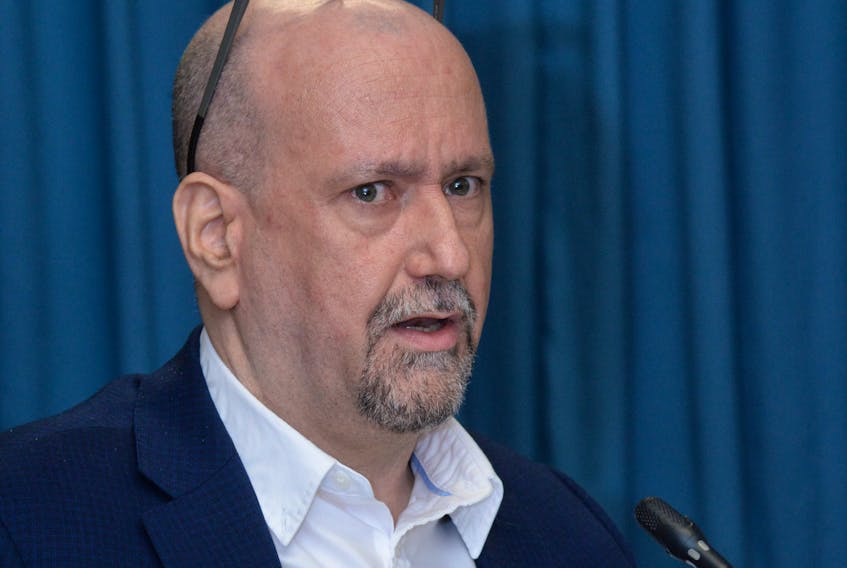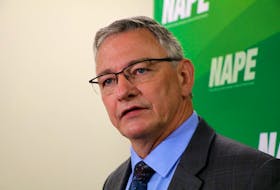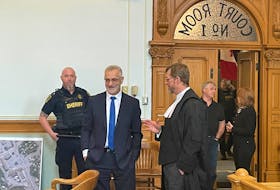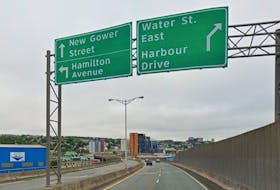ST. JOHN'S, N.L. — Lance Clarke worked as the business manager for the Muskrat Falls project management team, and on Thursday he testified at the Muskrat Falls Inquiry, and talked about — among other things — the role of SNC-Lavalin.
He suggested the company’s project risk assessment report from 2013 is nothing but a “red herring.”
It has been talked about a lot in the public, he said, but is not significant in his eyes, and is not considered in the context of SNC-Lavalin’s loss of its full engineering, procurement and construction management (EPCM) contractor role on the project. He suggested it was meant to be used by SNC-Lavalin to regain control.
Clarke, who left the project about 18 months ago but still consults as needed, testified he doesn’t personally remember being a part of conversations specifically about the content or merits of SNC-Lavalin’s report.
He was asked about an email from project director Paul Harrington, in which Harrington outlines the reasons Nalcor Energy and the project management team would not want to have the report.

The May 29, 2013, email states the SNC-Lavalin review was based on the same source data Westney Consulting (tapped by the project team at times for risk review) had available, and it costed out risks without considering any of management’s mitigation efforts. He stated it did not use a probabilistic analysis and so offered “misleading” results, and it also didn’t provide an opportunity for the Nalcor project management team to challenge any underlying assumptions.
Harrington was going to let SNC-Lavalin know, for these reasons, it was preferred the company keep the report to itself. Nalcor’s team didn’t want to have it.
“It doesn’t surprise me I was copied (on the email) because we would have interpreted it as another attempt by SNC to just not be focused on what they were supposed to be focused on,” Clarke said on the stand.
“I just, I think it was a red herring. But I know my opinion doesn’t necessarily matter,” he said.
Clarke suggested there were efforts on the part of SNC-Lavalin to undermine the “integrated” project management team developed by Nalcor Energy and seek a return to the original construction management plan.
“The government change that occurred (in 2015), SNC came back very hard,” he said. “They saw it as an opportunity, obviously.”
Clarke said it was known amongst the independent members of the “integrated” project management team that there had been a meeting with Stan Marshall, following Marshall’s appointment as president and CEO of Nalcor Energy, where SNC-Lavalin asked to put in a proposal to take back control.
Along similar lines, deputy project manager Ron Power was asked this week about some text messaging in March between him and fellow project management team member Scott O’Brien.
“Yes – don’t worry – I’ll get Normand,” Power typed at one point.
On the stand, he said he meant he’d speak to former SNC-Lavalin project manager Normand Béchard’s involvement with the risk report on Muskrat Falls. “Because I understand, and I don’t know the details (…) that Normand was one of the people involved in the proposal, and the proposal to take over is in here, is one of these exhibits, and the proposal is to reinstate the EPCM services and to remove the existing project management team,” he said.
“The government change that occurred (in 2015), SNC came back very hard. They saw it as an opportunity, obviously.” — Lance Clarke
While the Inquiry has heard from project management team members, it has also previously heard from members of SNC-Lavalin’s team, who said the company’s risk report on the Muskrat Falls project was developed in good faith, and as a means of protecting SNC-Lavalin.
Béchard testified the report came out of the company’s legal battles nationally and internationally. He said after Robert Card was appointed CEO in the summer of 2012, he began reviewing internal policies and ongoing projects. “Mr. Card, since he was coming from the big project management world, brings with him best practices. And one of those best practices was to assess risks on a big project that a company like SNC may have. And the purpose of assessing those risks was also to better control the exposure of the company,” he said.
Scott Thon, who was asked to run SNC-Lavalin’s global power division in 2013, testified the risk review first came up because of the company’s changing role. “The thought was there was a closing door for some project information,” he said, adding that it was meant as an internal document.
The report was made public by Premier Dwight Ball in 2017.
Twitter: @TeleFitz
RELATED









